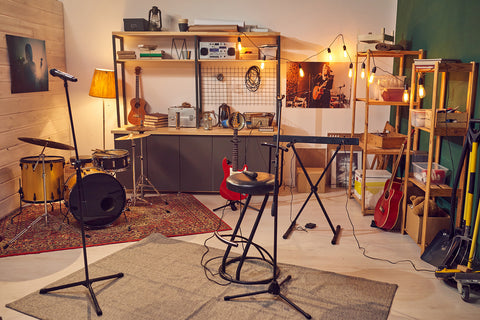How Can Beginners Set Up an Efficient Home Studio?
How Can Beginners Set Up an Efficient Home Studio?
Your Comprehensive Guide to Building a Functional Recording Space
Creating a home studio is a dream for many aspiring musicians and audio technicians. However, navigating the myriad of equipment choices and acoustic considerations can be overwhelming. This guide provides step-by-step instructions for beginners to set up an efficient home studio, ensuring your space is not only functional but conducive to producing high-quality audio.
Introduction: The Journey to Your Own Home Studio
Embarking on setting up a home studio is an exciting venture. It offers the freedom to record and produce music at your convenience and comfort. This guide is tailored to help beginners lay the foundation for an efficient and effective home studio.
1. Planning Your Space: The First Step
Before purchasing equipment, it’s crucial to thoughtfully plan your studio space.
Choosing the Right Room
Understand the importance of selecting a suitable room in your home, considering factors like size, shape, and external noise.
Acoustic Treatment Basics
Learn the basics of acoustic treatment with acoustic panels and other materials to optimize your room for recording and mixing.
2. Essential Equipment: What You Really Need
A home studio doesn’t require a massive budget. Focusing on essential equipment is key.
The Core Setup
Discover what the core pieces of equipment are, including a reliable computer, audio interface, microphones, and headphones or monitors.
Making Smart Purchases
Get tips on how to choose quality equipment that fits your budget and needs, and why it's important to invest wisely.
3. Acoustic Treatment: Enhancing Your Recording Environment
Proper acoustic treatment is crucial for achieving clear and accurate sound.
Using Acoustic Panels Effectively
Find out how to strategically place acoustic panels and other treatments to reduce unwanted echoes and reverberations.
DIY Acoustic Solutions
Explore cost-effective DIY solutions for acoustic treatment, helping you improve sound quality without a hefty price tag.
4. Setting Up Your Gear: Configuration Tips
Setting up your equipment properly can greatly impact the quality of your recordings.
Optimal Equipment Placement
Learn the best practices for placing your gear, including how to position monitors for the best sound and how to set up your microphone for optimal recording.
Cable Management and Organization
Understand the importance of cable management and maintaining an organized workspace to ensure a clutter-free and efficient studio environment.
5. Recording and Mixing: Getting Started
With your space and equipment set up, it’s time to start recording and mixing.
Basic Recording Techniques
Grasp basic recording techniques, including mic placement, and learn how to capture the best sound from your instruments and vocals.
Intro to Mixing
Get an introduction to mixing, including how to balance levels, apply EQ, and use basic effects to enhance your recordings.
6. Continuous Learning and Upgrading
A home studio is an evolving space that benefits from continuous learning and gradual upgrades.
Staying Informed and Up-to-Date
Stay informed about the latest trends in audio technology and production techniques to keep your skills sharp and your studio up-to-date.
Planning for Future Upgrades
Learn how to plan for future upgrades, ensuring that your studio grows with your skills and demands.
Conclusion: Embarking on a Rewarding Audio Journey
In conclusion, a well-managed signal flow is the backbone of high-quality audio production. By applying these tips and continuously learning, you can transform your home studio into a space where professional and crisp audio is the standard.
ABOUT AUTHOR
House Live Engineer of Free Bird, a live house with the history of South Korea's indie music scene.
Single album/Regular album/Live recording, Mixing and Mastering experience of various rock and jazz musicians


















